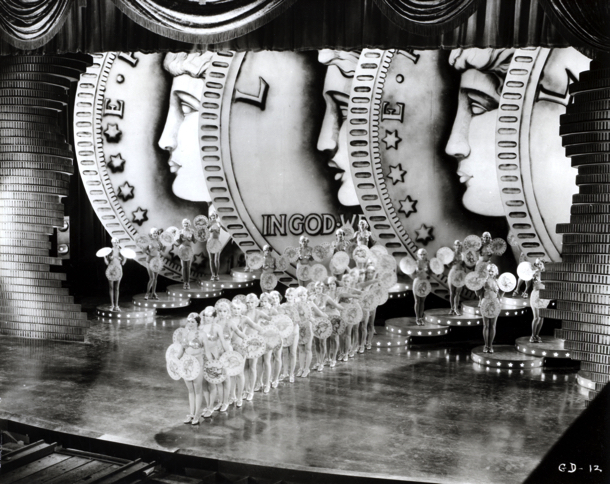
 “The content of the motion picture still was designed for escape, the majority reflecting the tastes of tired or jaded adults seeking a never-never la-Dixton Wector, stories of luxury and melodrama, sex and sentiment.“
“The content of the motion picture still was designed for escape, the majority reflecting the tastes of tired or jaded adults seeking a never-never la-Dixton Wector, stories of luxury and melodrama, sex and sentiment.“
America in the 1930s was a nation in flux. Ravaged by political turmoil and economic uncertainty of the Great Depression; filmmakers responded to rapid social change with some of the 20th century’s most escapist and outlandish cinema that saw the birth and rise of truly legendary stars, some of whom are still alive today. The early 1930s ushered in the ‘golden age’ of Hollywood’ an era that was to continue well into the 1940s. Despite financial anxiety and unemployment affecting 25 percent of the population, movie theatres across the nation saw almost 70 million Americans stump up their hard-earned cash to get away from the doom and gloom and seek adventure, fantasy, glamour and even horror in their spare time.
After the stock market crash of 1929, the American economy never recovered fully before the USA entered WWII in 1941, when the efforts to win the war guaranteed full employment for the first time in 1942. The worldwide recession had hit the USA the hardest: between 1929 and 1932 unemployment rose by a staggering 607%. But in 1935, Hollywood could breathe easy again: 80 million cinema tickets had been sold, only ten million less than before the depression. The fact that sound technology had been introduced in nearly all cinemas nationwide during this period – and the entrance fee of a mere 15 Cent – had certainly contributed to this trend.
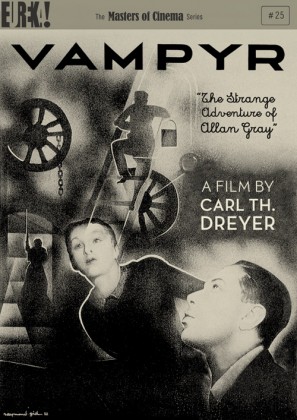
 Genre-wise, gangster films (with some of the late 1930s movies being more than precursor to the Film Noir) were highly popular, and a new sub-genre: the Screwball Comedy. The 1930s also was a heyday for musicals. Often theming hard times, these captured the imagination of depressed audiences and boosted morale with a positive outcome or happy ending. The Silent era was slowly fading replaced by the ‘talkies’ – many classic films were lushly remade and would be re-adapted over and over again – The Prisoner of Zenda and Cleopatra, several times. At the same time the studio system roared into action with the Hay’s Code, an wide scale attempt at organized censorship of Hollywood films. Sensationalist films such as King Kong (1933) and The Invisible Man (1933) were all the rage and the first sound action par b&w film Hell’s Angels (1930) starring Jean Harlow (in her only colour film) was made by Howard Hughes. The Horror genre was developed with more Dracula films: Bride of Frankenstein (1935) and Dracula’s Daughter (1936), The Mummy (1932), Vampyr (1932) and The Hunchback of Notre Dame (1939). Boris Karloff and Bela Lugosi are household names whose careers were forged in Horror. And the 1930s also saw the rise to fame of The Marx Brothers, who made their debut at the end of the silent era, in Comedy.
Genre-wise, gangster films (with some of the late 1930s movies being more than precursor to the Film Noir) were highly popular, and a new sub-genre: the Screwball Comedy. The 1930s also was a heyday for musicals. Often theming hard times, these captured the imagination of depressed audiences and boosted morale with a positive outcome or happy ending. The Silent era was slowly fading replaced by the ‘talkies’ – many classic films were lushly remade and would be re-adapted over and over again – The Prisoner of Zenda and Cleopatra, several times. At the same time the studio system roared into action with the Hay’s Code, an wide scale attempt at organized censorship of Hollywood films. Sensationalist films such as King Kong (1933) and The Invisible Man (1933) were all the rage and the first sound action par b&w film Hell’s Angels (1930) starring Jean Harlow (in her only colour film) was made by Howard Hughes. The Horror genre was developed with more Dracula films: Bride of Frankenstein (1935) and Dracula’s Daughter (1936), The Mummy (1932), Vampyr (1932) and The Hunchback of Notre Dame (1939). Boris Karloff and Bela Lugosi are household names whose careers were forged in Horror. And the 1930s also saw the rise to fame of The Marx Brothers, who made their debut at the end of the silent era, in Comedy.
 But the Great Depression did have an impact on Hollywood studios where the public still mattered. In the words of Herbert Gans “The audience is obviously limited by what it is offered but what is offered to it depends a great deal on what it has accepted previously.” Since the industrial boom of the 1890s society saw an increase in commercialism with many people moving from a simple rural existence to the big metropolis, as the population continued to grow – with over three million migrating to the West Coast with the droughts of the Great Plains causing further economic hardship and inspiring John Steinbeck to write The Grapes of Wrath (1939).
But the Great Depression did have an impact on Hollywood studios where the public still mattered. In the words of Herbert Gans “The audience is obviously limited by what it is offered but what is offered to it depends a great deal on what it has accepted previously.” Since the industrial boom of the 1890s society saw an increase in commercialism with many people moving from a simple rural existence to the big metropolis, as the population continued to grow – with over three million migrating to the West Coast with the droughts of the Great Plains causing further economic hardship and inspiring John Steinbeck to write The Grapes of Wrath (1939).
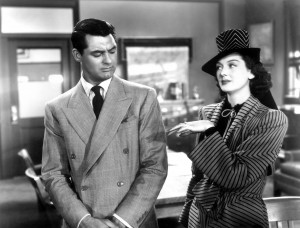 The choreographer Busby Berkeley directed the dance numbers in classics like Gold Digger, 42nd Street and Top Hat (1935), whilst stars like Judy Garland, Fred Astaire and Ginger Rodgers were positive role models; also the child star Shirley Temple (Our Little Girl), who embodied a new optimism in time of hardship. The Gay Divorce (1934) and Top Hat (1935) were also Screwball comedies, a new sub-genre dominated by director Howard Hawks. But it was Lewis Milestone, who directed the newspaper satire The Front Page in 1931, to start it all – not by accident, it was Howard Hawks who re-made the film as His Girl Friday in 1940 (left). Frank Capra, who later became the chronicler of the “New Deal”, President Roosevelt’s economic recovery plan, followed in 1934 with It Happened One Night. Hawks than directed Bringing Up Baby in 1938: a flop, when it was released, the classic of the genre today. The screwball comedies had to be careful: most of them were set in a very up-market environment – and the cinema audience had an ambiguous relationship with the upper class: one he one hand, there was envy, but since the films often mad fun of the protagonists, they were forgiven. In George Cukor’s Philadelphia Story from 1940, James Stewart’s Mike Connor, an ordinary man, who has ‘fallen’ into high society, embodies this conflict: in the end he is quiet glad, that he is spared a marriage with socialite Catherine Hepburn, who remarries her social equal, the playboy Gary Grant.
The choreographer Busby Berkeley directed the dance numbers in classics like Gold Digger, 42nd Street and Top Hat (1935), whilst stars like Judy Garland, Fred Astaire and Ginger Rodgers were positive role models; also the child star Shirley Temple (Our Little Girl), who embodied a new optimism in time of hardship. The Gay Divorce (1934) and Top Hat (1935) were also Screwball comedies, a new sub-genre dominated by director Howard Hawks. But it was Lewis Milestone, who directed the newspaper satire The Front Page in 1931, to start it all – not by accident, it was Howard Hawks who re-made the film as His Girl Friday in 1940 (left). Frank Capra, who later became the chronicler of the “New Deal”, President Roosevelt’s economic recovery plan, followed in 1934 with It Happened One Night. Hawks than directed Bringing Up Baby in 1938: a flop, when it was released, the classic of the genre today. The screwball comedies had to be careful: most of them were set in a very up-market environment – and the cinema audience had an ambiguous relationship with the upper class: one he one hand, there was envy, but since the films often mad fun of the protagonists, they were forgiven. In George Cukor’s Philadelphia Story from 1940, James Stewart’s Mike Connor, an ordinary man, who has ‘fallen’ into high society, embodies this conflict: in the end he is quiet glad, that he is spared a marriage with socialite Catherine Hepburn, who remarries her social equal, the playboy Gary Grant.

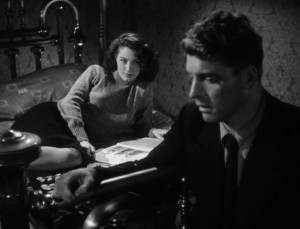 Whilst John Huston’s remake of Roy de Ruth’s The Maltese Falcon from 1931 is the official’ birthday’ of American Film Noir in 1941, throughout the 1930s examples of noir elements infiltrated film, led by German emigrant directors, among them Fritz Land and John Brahm (1893-1982), the latter, like Lang, a re-emigrant, who returned to his homeland for two films in the mid-1950s, only (unlike Lang) to finish his career in Hollywood. Brahm’s Let us Live, wit Henry Fonda, and Rio (with Basil Rathbone), both from 1939, where certainly fully fledged film noirs, as was his Hangover Square from 1945. But there is more than one example for every year of the 1930s for a noirish crime film: City Streets (1931) by Rouben Mamoulian, Scarface (Howard Hawks 1932), Glass Key (Frank Tuttle, 1935), Fury (1936) and You Only Live Once (1937) by Lang. In 1936, William Dieterle, another Berlin director who came to Hollywood, directed Satan Met a Lady with Betty Davis. And there is Angels with Dirty Faces (1938), by Michael Curtiz, a Hungarian émigré. It was left to Robert Siodmak (1900-1973), another ex-UFA director from Berlin (and another re-emigrant), to become the “Prince of the Film Noir”: in 1942 he would direct Fly by Night, a thriller cum screwball comedy, before he made the classic trio of The Spiral Staircase, The Killers and Criss Cross between 1945-1948.
Whilst John Huston’s remake of Roy de Ruth’s The Maltese Falcon from 1931 is the official’ birthday’ of American Film Noir in 1941, throughout the 1930s examples of noir elements infiltrated film, led by German emigrant directors, among them Fritz Land and John Brahm (1893-1982), the latter, like Lang, a re-emigrant, who returned to his homeland for two films in the mid-1950s, only (unlike Lang) to finish his career in Hollywood. Brahm’s Let us Live, wit Henry Fonda, and Rio (with Basil Rathbone), both from 1939, where certainly fully fledged film noirs, as was his Hangover Square from 1945. But there is more than one example for every year of the 1930s for a noirish crime film: City Streets (1931) by Rouben Mamoulian, Scarface (Howard Hawks 1932), Glass Key (Frank Tuttle, 1935), Fury (1936) and You Only Live Once (1937) by Lang. In 1936, William Dieterle, another Berlin director who came to Hollywood, directed Satan Met a Lady with Betty Davis. And there is Angels with Dirty Faces (1938), by Michael Curtiz, a Hungarian émigré. It was left to Robert Siodmak (1900-1973), another ex-UFA director from Berlin (and another re-emigrant), to become the “Prince of the Film Noir”: in 1942 he would direct Fly by Night, a thriller cum screwball comedy, before he made the classic trio of The Spiral Staircase, The Killers and Criss Cross between 1945-1948.
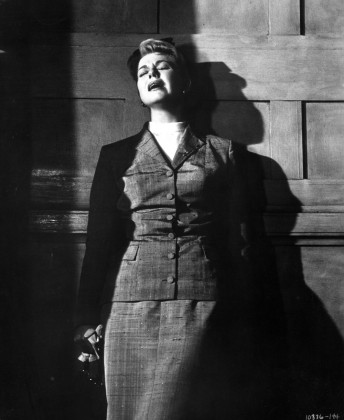 Meanwhile in France, the 1930s were characterised by the lyrical style of poetic realism particularly pioneered by Jean Renoir, Julien Duvivier and Marcel Carné. Often melancholy or fatalistic in tone, these films were rather stylised and centred on unfortunate characters stuck in the margins of society or disillusioned with life and love. Simon Signoret and Jean Gabin frequently starred in these films with regular scriptwriters Charles Spaak and Jacques Prévert. The style went on to influence Italian Neorealism and eventually the French New Wave. Germany started the 1930s still under the influence by the Weimar Republic which had been going since 1919 but eventually gave way to Nazism which exerted a strong artistic control over German cinema. The dark elements of German Expressionism during the 1920s were eventually taken to America by emigrés such as Robert Siodmak, Fritz Lang and Billy Wilder and Alfred Hitchcock whose style and repertoire had a profound impact on Hollywood particularly as regards film Noir, Horror and the subsequent Monster movies. AS/MT
Meanwhile in France, the 1930s were characterised by the lyrical style of poetic realism particularly pioneered by Jean Renoir, Julien Duvivier and Marcel Carné. Often melancholy or fatalistic in tone, these films were rather stylised and centred on unfortunate characters stuck in the margins of society or disillusioned with life and love. Simon Signoret and Jean Gabin frequently starred in these films with regular scriptwriters Charles Spaak and Jacques Prévert. The style went on to influence Italian Neorealism and eventually the French New Wave. Germany started the 1930s still under the influence by the Weimar Republic which had been going since 1919 but eventually gave way to Nazism which exerted a strong artistic control over German cinema. The dark elements of German Expressionism during the 1920s were eventually taken to America by emigrés such as Robert Siodmak, Fritz Lang and Billy Wilder and Alfred Hitchcock whose style and repertoire had a profound impact on Hollywood particularly as regards film Noir, Horror and the subsequent Monster movies. AS/MT
Inspired by AFTER THE FALL: AMERICAN PAINTING DURING THE DEPRESSION | RA.ORG